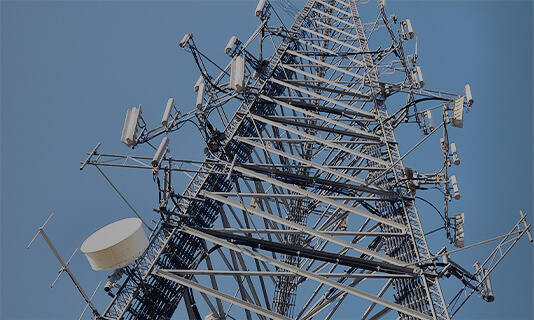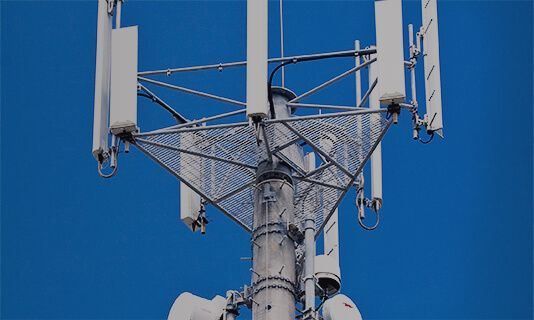TECHNOLOGY FOCUS
Receiving antennas are like the eyes/ears of the systems to which they are connected and transmitting antennas are like the mouths that communicate with the outside world. The detailed characteristics of antennas as well as the surface on which they are installed and neighbouring obstacles have to be taken into account when positioning antennas on structures. The interoperability between the antennas in the time, frequency and spatial domains is challenging especially on the limited real estate of an airframe. Military aircraft can have more than 80 individual antennas on a single airframe. The integration of antennas on a structure impacts other systems and disciplines such as EMI (electromagnetic interference), EMC (electromagnetic compatibility), Mechanical, Weights, Structural, Stealth, Turbulence, EMP (electromagnetic pulse), aerodynamics and flight test in the case of airborne systems, etc. In the case of retrofits there is a knock-on effect on other antennas that may have to be moved, to maintain RF interoperability between the systems. The entire process to certification can take many man/people years and involve several iterations. Although the installation of antennas on an aircraft is most challenging because of the limited real estate, antennas on marine craft are subject to the ravages of waves and the variations in surface and the other properties (such as the permittivity and conductivity) of the water. In the case of land based antennas that provide the infrastructure, for instance in the case of landing systems, the surrounding area has to be modelled to ensure optimal operation in the spatial domain.


COURSE CONTENT
The participants will learn about the main characteristics of an antenna, its near and far fields, and its ideal as well as its installed radiation patterns. The characteristics of antennas of the various systems to which they are connected will be described and it will be shown that Fourier transforms can be used to predict the ideal radiation pattern from the aperture illumination of an antenna. Fourier analysis will be used to demonstrate qualitatively the frequency content of a waveform in the time domain. The uninstalled radiation patterns of some typical antennas will be compared with their radiation patterns when they are installed on an aircraft at various positions and frequencies. The RF interoperability between systems and their operation in the time, frequency and spatial domain will be described. The antenna siting process will be discussed in detail for entire antenna layouts but this is also relevant to individual retrofits on aircraft, since retrofits usually have a knock-on effect on existing antennas, which might have to be moved.
Measurements on scaled models and correlation with computer modelling will be discussed and an overview of the measurement facilities and generic types of computing modelling software will be presented. By the end of the course the Participants will have obtained a thorough grounding of the process of installing an entire antenna layout as well as individual retrofits on aircraft. This process can be used for installing antennas on other structures such as buildings, ships etc which have more real estate and fewer obstacles. The presenter Thereza Macnamara was the technical coordinator of the IPAS (Installed Performance of Antennas on AeroStructures) EU project, and together with the participants of 9 other companies developed a code of practice for the antenna siting process on aircraft.
WHO SHOULD ATTEND
This course is suitable for antenna engineers as well as engineers working on all systems connected to antennas, including airborne systems and the ground based sector that form the infrastructure of landing and navigation systems. This is a sequel to the foundation course of EM Propagation and Antennas (810) and it is assumed that the participants have attained the standard of that course or have had several years of industrial experience. Since the computed radiation patterns of antennas on structures are usually evaluated by correlation with the measured patterns on scaled models of the structures or on full scale structures, this course will be useful for CEM (Computational EM) as well as test Engineers working on measurement facilities. The challenges of installing antennas on an aircraft with limited real estate and the tradeoffs required will be of particular interest to all project Managers who have to weigh the conflicting interests of the limiting characteristics of the airframe, the requirements of the systems and interoperability in the time, frequency and spatial domains. The principles of the antennas are qualitatively explained without recourse to the advanced mathematics of Maxwell’s equations.

Due to ongoing Covid-19 pandemic, and the uncertain travel recommendations for Spring 2021, it is decided that this course will run Online during this period. The daily schedule will be adjusted to fit remote training. Make a preliminary booking and we will keep you updated.
Day 1
Overview of the main characteristics of antennas
Free space waves – sky, ground and space waves
Guided waves
Wire and aperture antennas
Near and far fields of a wire antenna (aerial)
Near and far fields of an aperture antenna
Radiation patterns at different distances from the aperture
Derivation of the far-field radiation patterns from the Fourier transform of the aperture illumination
Variation of radiation patterns with the aperture illumination
Fourier analysis of waveforms
Friis’ formula for space attenuation
Link budgets between two antennas
Poynting’s power flux density
Physical and electrical dimensions
Day 2
RF interoperability – in the frequency, space, polarisation and time domain
Coupling between systems – conducted and radiated emissions
Coupling between antennas due to radiated emissions outside the airframe
Techniques for achieving RF interoperability
Day 3
Overview of some systems using antennas
DME Distance Measuring System
EL Emergency Locator transmitter
GPS Global Positioning System
GLONASS Global Navigation Satellite System
HF High Frequency
ILS - Instrument Landing System
Radar Radio Assisted Detection and Ranging
RadAlt Radio Altimeter
Radar S band X band
SSR Secondary Surveillance Radar
TCAS Traffic Collision Avoidance System
UHF Ultra High Frequency communications
VHF Very High Frequency communications
VOR VHF Omnidirectional Range en-route & terminal navigation
Weather Radar C and X band
Day 4
The antenna siting process
Selection of sites for priority systems in the case of airframes
Initial Paper Design Stage
Investigative and Computational Modelling Phase
Verification and Implementation Phase
Certification and Qualification Phase
Day 5
Measurements on scaled test bodies
Radiation patterns on cylinders
Effect of frequency, ground plane, tail fin, wings, etc., on the radiation pattern
Generic computer modelling techniques
Overview of measurement sites
Measurements of installed antennas on aircraft
Correlation between measured and computed radiation patterns
Ms. Macnamara has written a text that is a recommended reference. The reference is not required for this course.
Title: “Introduction to Antenna Placement & Installation”
by Thereza M. Macnamara .John Wiley & Sons, Ltd. ISBN: 9780470019818, February 2010.

